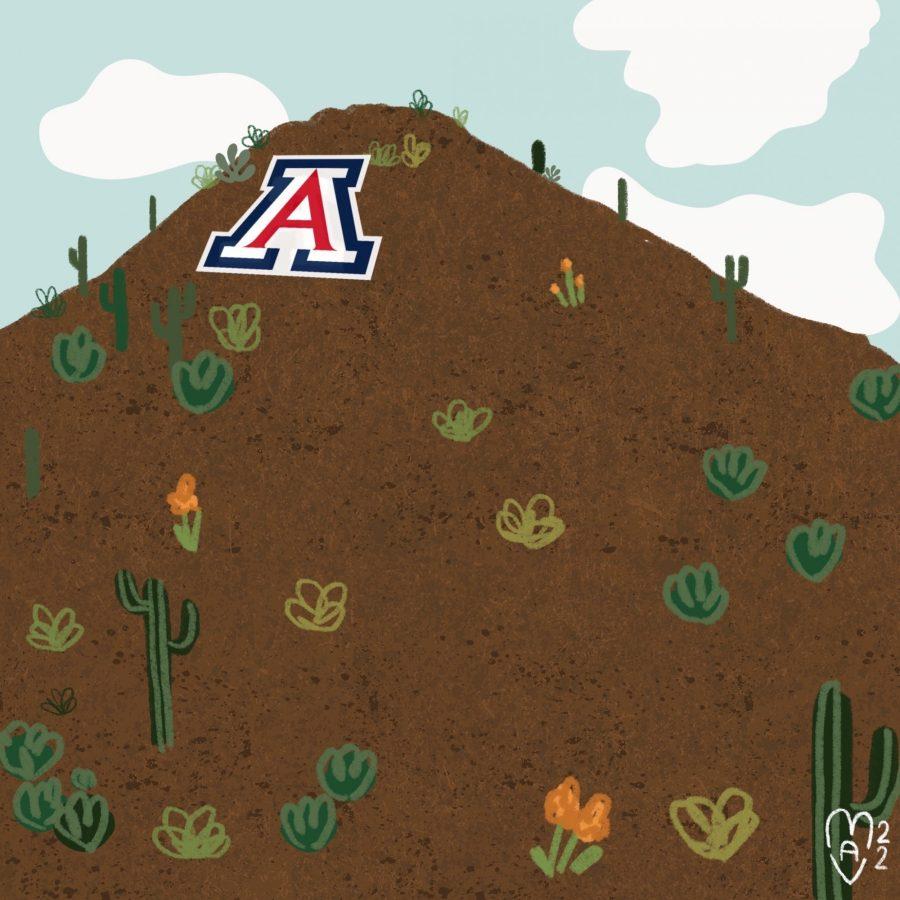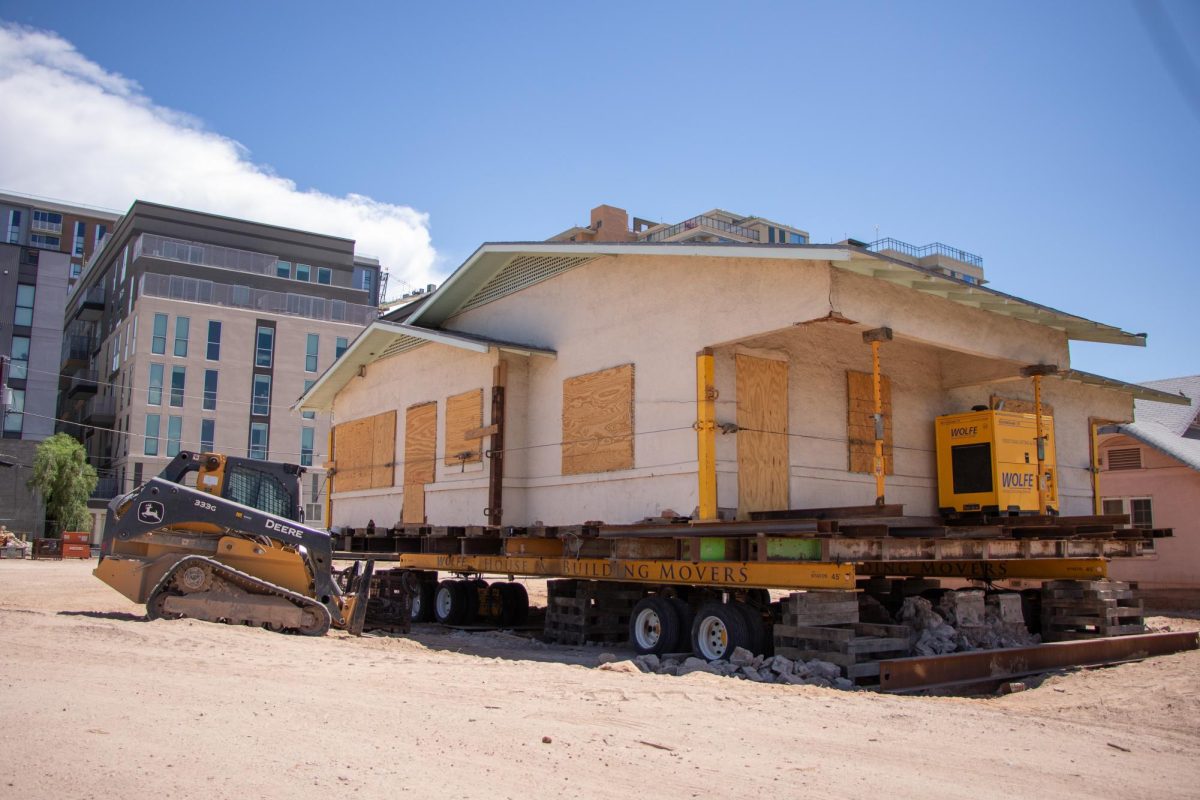Look, this is a safe place to be vulnerable. You don’t need to be ashamed to admit it. We’ve all been there. Face-to-face with some mountain with nothing but the thought, “That’s a lot of rocks.” Perhaps your experience was more impactful, though hopefully not in a literal sense.
If you’ve spent any amount of time in Tucson, you have seen a myriad of mountains in every direction. While you might not be the type to rank mountains in your free time, the massive Mount Lemmon would likely come to mind first if you did. However, somewhere on your list, you would eventually be forced to mention Sentinel Peak: a mountain known more commonly as “A” Mountain. While it may not be the best mountain in Tucson, it’s certainly the best “A” Mountain.
I wasn’t always the mountain enthusiast that I am today. I was once like many others, looking at and instantly forgetting every hill I saw. They blended together into one amorphous gray blob in my memories. Then, everything changed.
However, it’s at this point that I must disclose a potential conflict of interest before I go any further. The “A” Mountain that came to my mind when you and I shared that insightful observation about rocks was not Sentinel Peak in Tucson, but rather Hayden Butte in Tempe. I attended Arizona State University during my undergraduate years and even guided tours of the campus. As a tour guide, I always began at the base of the hill that graced the smoggy Tempe skyline.
“A” Mountain is a local icon in Tempe, reminding over 60,000 students what rocks look like. It’s involved in numerous traditions tied to ASU school spirit and athletics, as well as a very popular place for local teens to practice their skills with a lighter and some kind of pungent incense. I had made the brief trek many times to gaze over the flour mill and man-made lake during my time there. Never once did it occur to me, a Tempe native, that the only “A” Mountain I had ever known was just a hill. When I first moved to Tucson, I set eyes upon a proper mountain, adorned with a single block letter just as I had seen in my hometown. I had no prior knowledge of Sentinel Peak and readied myself to defend one of the few iconic attractions of my home from mimicry.
“How could the imitation be better than the original?” I rhetorically asked myself for the sake of moving forward with this article.
But Sentinel Peak is the indisputable, bonafide original “A” Mountain, and Hayden Butte is nothing but a sloppy copy. If ASU were somehow a person rather than a part-time academic institution and full-time tax-exempt real estate company, they might ask you to consider the history before you jump to conclusions about which mountain is better. They might even ask how one “A” Mountain can be fairly compared to another, but since ASU is not a person, I don’t have to answer that question.
In fairness, the whole picture is important to keep in mind as I attempt to convince you to have strong feelings about a natural rock formation. First, there’s a height difference which – for those who have not spent as much time thinking about the two “A” Mountains as me – may be surprising to know as Sentinel Peak is nearly twice the size of Hayden Butte!
It may also be helpful to know that Hayden Butte is younger than its more impressive counterpart in Tucson. Hayden Butte is thought to have been inhabited between 750 and 1450 AD, whereas Sentinel Peak has potentially been home to civilization for over 4,000 years. It also might explain why ASU was late to the party when it came time for the newest fad of putting letters on tall rocks. Not only did soon-to-be ASU not put up their letter “A” until 2 years after the University of Arizona, they originally put an “N” for the Tempe Normal School. It took a full two name changes and 21 years before ASU decided to embarrass Hayden Butte with an “A” of its own.
Since Hayden Butte is the little brother in numerous ways, it may seem unfair to criticize it. However, since both mountains will get to laugh into eternity as they watch future generations of my family become the dirt that will one day cover its immortal facade, I think we can have a little fun right now.
The two peaks share more than a history of claiming a site of Indigenous significance for a vanity project in the form of the letter “A.” Both involve the same sensory blend of loud music and the pungent aroma of some very strong incense carried by a gentle desert breeze. One very important difference is the location. As mentioned earlier, when you stand atop Hayden Butte, you are limited in your view to Downtown Tempe and reminded that this humble hill is the lone preserved natural habitat in a sea of apartments and corporate realty. When fortunate enough to summit Sentinel Peak, you can’t help but be humbled and awestruck by the Saguaro National Park to the west and Catalina Mountains to the north. The area around Sentinel Peak is home to many more species of flora and fauna which make the destination ideal for connecting with nature.
While it still seems shameless of ASU to give their mountain the same name and decorative “A” merely 113 miles from the other, the mimicry goes both ways. In a rare moment of triumph for Hayden Butte, only it holds claim to the first mountainside performance of appreciation towards healthcare workers when the “A” in Tempe was painted blue a month before the “A” in Tucson. It’s a sweet gesture visible to all the local healthcare workers overburdened with fighting the spread of COVID-19. It’s a gesture that would have been more meaningful as a student at ASU at the time, and current medical student, if either university had backed it up with more support such as time off for the healthcare workers experiencing unprecedented burnout. But if you’re going to hand out empty gestures, it’s at least nice to be the first to do it.
RELATED: OPINION: Out-of-state students should vote in their home state
As Homecoming approaches, there will be no shortage of discussion about the ways in which the UA is superior to ASU. I just ask that you not forget about the mountains. I ask that when you think of Hayden Butte, pity the hill unfortunate to live in the shadow of a mountain twice its size with an original claim to its name.
Hayden Butte is a sweet little hill that makes for a fine outdoor walk to get a better view of Tempe. Go and visit both, learn their history and come to your own conclusions. Regardless of whether you agree with me or not, these two mountains need our help to preserve for future generations to compare.
There is a longstanding history of mountaintop vandalism from students at both universities. In addition to frequent repainting in the opposing team’s colors, the “A” in Tempe was also once blown up by dynamite and the nearby rocks on both mountains are frequently obscured by graffiti and trash. We must remind ourselves that beneath the shared facade of school spirit, both mountains serve as historic sites of early civilization, and are home to a diverse array of regional plants and animals. Regardless of who wins the football game, rest assured that you’ll still be able to look down on ASU from 3,000 feet above the ground.
Follow the Daily Wildcat on Twitter

Ben Pope is a second year medical student at the UA. Although native to Tempe, he has moved down south to study medicine and enjoy all the good food Tucson has to offer.









